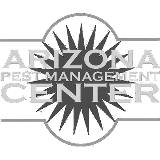With the cauliflower/broccoli/cabbage season, the black rot is a common disease in those plants. In Yuma area black rot has been seen in early as well as late stage on plants. In early season the disease is more of a concern in the greenhouse, and later in the season we see the disease in the field. Black rot is a disease in cole crops caused by bacterium, Xanthomonas campestris pv. Campestris.
The pathogen can enter the field on transplants or seeds, and can stay in the soil for over a year where it survives on debris and weeds in the Brassicaceae family. The bacteria move primarily with water and can enter the plant through pores naturally present on the leaf surface. It can also be spread by workers and equipment moving through the field/greenhouse, and can enter the leaves through damage caused by wind, insects and other mechanical injuries. The bacteria need a temperature of 77 degrees and above. While it may seem like the weather in desert is not humid enough for bacteria to become an epidemic, it is not something that should be ignored. The microclimate in the field with the crop canopy being dense, foggy mornings, increased field activity can be conducible for disease development.
Disease management include getting rid of infected plants/tissue, increasing distance between fields and choosing well-drained, controlling weeds especially in mustard family such shepherd’s purse, wild mustard, pepper weed etc. Soil fumigation is effective but may not be economically feasible. Best management practice starts with disease-free seed; hot water treatment can reduce the likelihood that the bacteria will enter the field through the seed. Starting with healthy transplant is equally important. For diagnosis, you can bring the samples to the clinic or you can also do visual/field diagnosos. You will see patches of dead tissue in plants with blackened veins. Usually when the disease is systemic, you can see the black streak when you cut cross section of the stem (see picture below).






